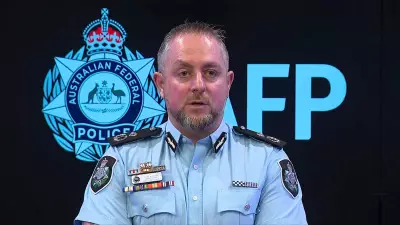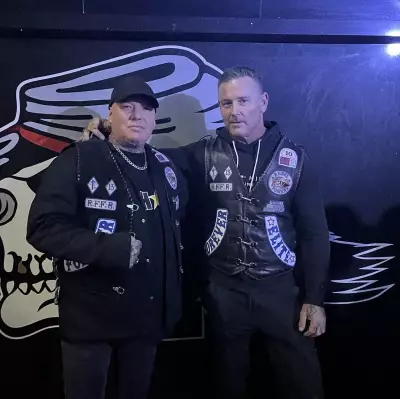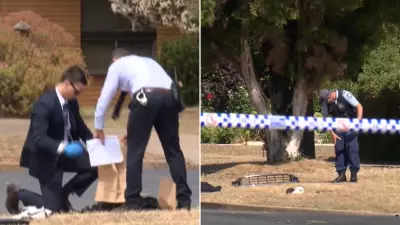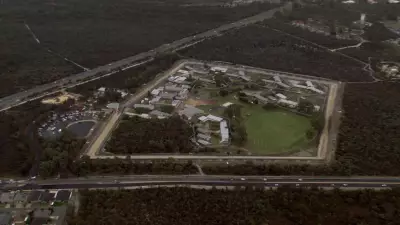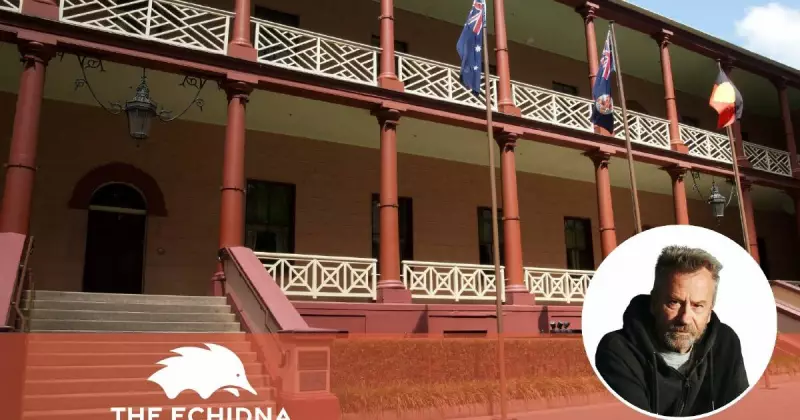
The Neo-Nazi Conundrum in Australian Politics
Australian authorities and media outlets face a complex dilemma when dealing with emerging neo-Nazi groups: ignore them and risk allowing their influence to grow unnoticed, or cover them and provide the attention they desperately crave. This challenge has come into sharp focus following recent events in Sydney that have sparked national debate.
A group identifying with neo-Nazi ideology gathered outside NSW Parliament in Sydney, dressed in distinctive black bucket hats, raincoats and dark glasses. Their appearance, described by observers as resembling "toy soldiers with bad haircuts," was accompanied by Hitler Youth chants and an anti-Semitic banner display.
ASIO's Warning About Extremist Attention-Seeking
The situation highlights the precise problem identified by security experts. Mike Burgess, director-general of ASIO, recently told the Lowy Institute that modern neo-Nazi groups actively seek media coverage to boost their credibility and recruitment efforts. "They see journalists as 'useful idiots' in this regard," Burgess warned, noting that even critical coverage typically leads to increased membership applications.
Burgess also emphasized the real danger of spontaneous violence triggered by hateful rhetoric. This creates a genuine catch-22 situation for authorities and media - damned if you ignore their activities, damned if you don't.
The Sydney protest, which occurred legally without the NSW government's prior knowledge, has embarrassed authorities while successfully generating the publicity the group sought. The incident has raised questions about how democratic societies should handle such demonstrations while maintaining freedom of speech principles.
Legal Framework and Historical Context
The group's apparent intention to register as a political party mirrors historical patterns of extremist movements attempting to work within democratic systems. However, Australia's constitutional framework presents both opportunities and limitations for such groups.
While the Australian constitution implies freedom of political communication, hate speech and anti-vilification laws prevent completely unrestricted expression. Recent legal changes have further restricted neo-Nazi activities - they cannot legally display swastikas or perform the stiff-arm salute in several jurisdictions.
In NSW, proposed legislation to ban face coverings at protests would potentially expose participants who currently hide their identities, likely fearing social ostracism if publicly identified.
Historical precedent suggests significant hurdles for any attempt to ban political parties outright. In 1951, Prime Minister Robert Menzies failed in his referendum attempt to gain power to ban the Communist Party of Australia, demonstrating the constitutional protections for political organization.
Democratic Safeguards Against Extremism
Australia's political system contains built-in protections against extremist groups gaining significant power. Compulsory and preferential voting tends to push government formation toward the political center rather than the extremes. Even if neo-Nazi groups manage to register as political parties, their electoral prospects appear minimal.
The Australian Electoral Commission's register of political parties reveals numerous eccentric organizations with virtually no chance of electoral success. Previous well-funded attempts by extreme groups have failed to gain traction with Australian voters.
Education remains a powerful weapon against extremist ideologies. The profound impact of learning about historical atrocities like the Holocaust through graphic documentary evidence can create lasting immunity against hate-based messaging.
Ultimately, Australia's democratic institutions and voting systems provide robust protection against extremist groups achieving political power, even as the debate continues about how best to handle their public manifestations and attention-seeking strategies.

